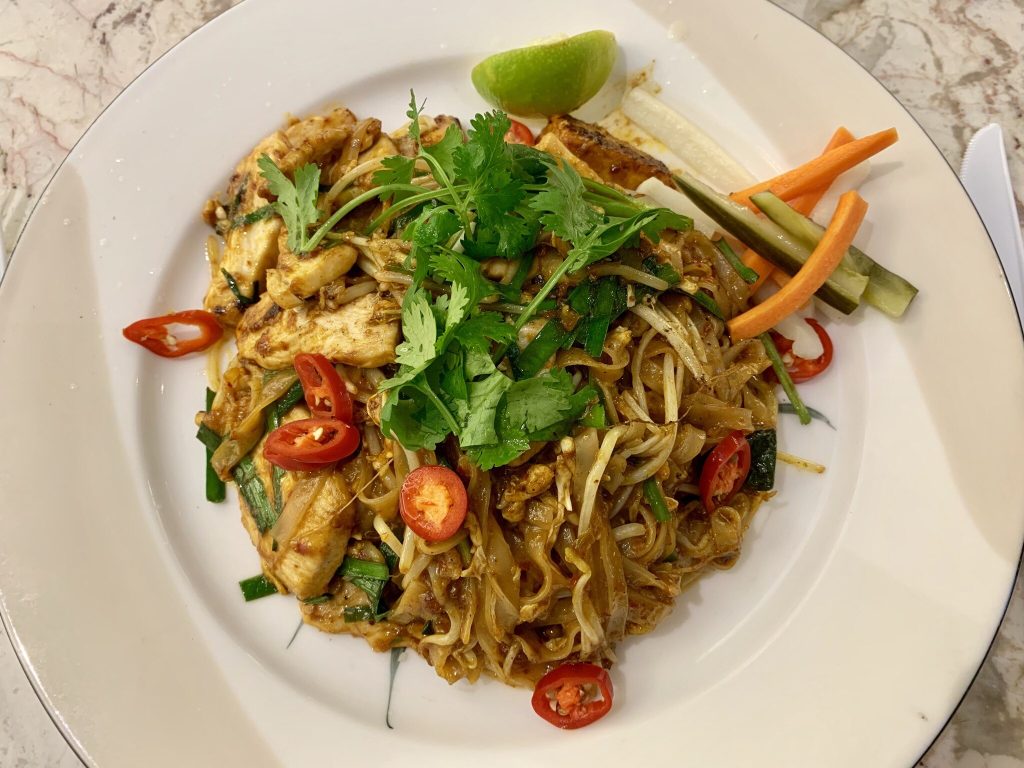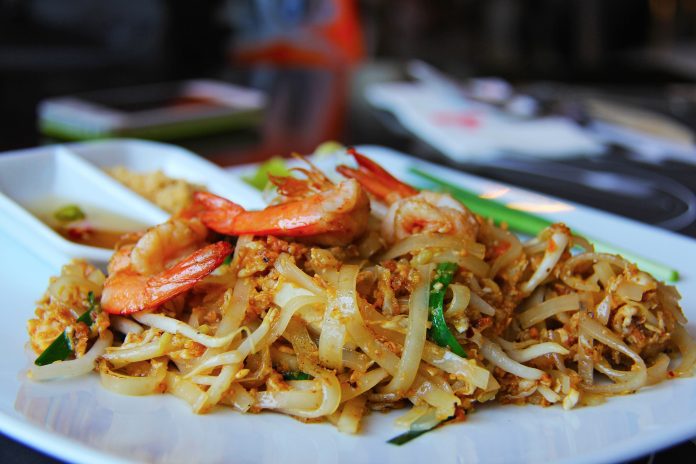Introduction to Pad Thai and Its Popularity
Indulge in a world of tantalizing flavors and aromatic spices with Pad Thai, an iconic dish that has captured the hearts and taste buds of food lovers worldwide!
Whether you’re a seasoned chef or a novice in the kitchen, mastering this beloved Thai street food classic is easier than you think.
Join us on a culinary adventure as we delve into the origins, ingredients, and step-by-step guide to creating your own delicious Pad Thai masterpiece. Let’s stir-fry our way to an unforgettable dining experience!
The History of Pad Thai and Its Origins
Pad Thai, a beloved dish known for its bold flavors and vibrant colors, has a rich history that dates back to the 1930s in Thailand.
Originally called “Phat Thai,” this iconic stir-fried noodle dish was created during a time when the government of Prime Minister Plaek Phibunsongkhram aimed to promote Thai nationalism and unify the country through food.
The exact origins of pad thai are somewhat mysterious, with some theories suggesting it was inspired by Chinese and Vietnamese influences.
However, what is certain is that over the years, Pad Thai has become synonymous with Thai cuisine around the world. Its perfect balance of sweet, sour, salty, and spicy flavors truly captures the essence of traditional Thai cooking.
As tourism increased in Thailand, so did the popularity of it among locals and foreigners alike. Today, it remains a staple street food dish enjoyed by people from all walks of life. The evolution of this recipe reflects not only culinary innovation but also cultural exchange and adaptation throughout history.
Ingredients Needed
Pad Thai is a vibrant and flavorful dish that requires a unique blend of ingredients to achieve its signature taste. To recreate this iconic Thai street food at home, you will need a few key components.
– Rice noodles are essential. These thin, flat noodles provide the perfect base for the dish and soak up all the savory flavors from the sauce.
– Next, protein options like shrimp, chicken, or tofu add depth and texture to Pad Thai. Choose your favorite or mix and match for a personalized touch.
– The sauce is where the magic happens in Pad Thai. A combination of tamarind paste, fish sauce, sugar, and chili flakes creates a sweet-sour-spicy balance that elevates the entire dish.
– Crunchy bean sprouts, chopped peanuts, fresh cilantro, and lime wedges are common toppings that enhance both the flavor and presentation of Pad Thai.
– Don’t forget garlic cloves – their aromatic essence infuses into every bite of this delightful noodle stir-fry.
Step-by-Step Recipe
To make a delicious Pad Thai at home, follow these simple steps.
1- Start by soaking rice noodles in warm water until they are soft but still slightly firm.
2- In a hot wok or skillet, sauté garlic and tofu until golden brown.
3- Add shrimp, chicken, or vegetables for extra protein and flavor.
4- Next, push the ingredients to one side of the pan and crack an egg into the space. Scramble it quickly before mixing it with the rest of the ingredients.
5- Toss in bean sprouts and sliced green onions for freshness.
6- Now add the soaked noodles to the pan along with a mixture of tamarind paste, fish sauce, sugar, and chili flakes for that signature Pad Thai taste.
7- Stir everything together until well combined.
8- Garnish your Pad Thai with crushed peanuts and fresh cilantro before serving hot.
Enjoy this flavorful dish that balances sweet, sour, and salty flavors perfectly!

Tips for the Perfect Pad Thai
When it comes to making it perfect, using fresh ingredients is key. Opt for vibrant vegetables like bell peppers, bean sprouts, and green onions to add color and crunch to your dish.
To achieve that authentic Pad Thai flavor, don’t skimp on the sauce. A balance of sweet, salty, and tangy flavors from tamarind paste, fish sauce, and palm sugar will elevate your dish to the next level.
Cook your noodles just right – not too soft or too firm. They should be al dente so they can soak up all the delicious flavors of the sauce without becoming mushy.
For added protein, consider adding tofu cubes or shrimp to your Pad Thai. These additions not only enhance the taste but also make the dish more satisfying.
Garnish with crushed peanuts and a generous squeeze of lime for that final touch of freshness and texture. Enjoy your perfectly balanced and flavorful homemade Pad Thai!
How to Customize Your Pad Thai
Customizing your delicious dish allows you to tailor this classic dish to suit your preferences. Want more heat? Add extra chili flakes or sriracha sauce for a spicy kick. For a burst of freshness, toss in some bean sprouts and cilantro just before serving.
For a protein-packed option, consider adding tofu, shrimp, chicken, or even beef – the choice is yours! Feel free to mix in your favorite vegetables like bell peppers, broccoli, or snap peas for added crunch and nutrients.
Experiment with different types of noodles – traditional rice noodles work perfectly but don’t hesitate to try out whole wheat or zucchini noodles for a healthier twist. Don’t forget about the toppings! Crushed peanuts, lime wedges, and green onions can elevate the flavors and textures of your Pad Thai.
Get creative with sauces too; from sweet tamarind paste to tangy fish sauce – each variation brings its unique taste profile. Embrace your culinary creativity and make Pad Thai truly your masterpiece!
Health Benefits
Pad Thai, beyond its delicious flavor and satisfying textures, offers a range of health benefits that make it a wholesome choice for your next meal.
The dish typically includes a variety of vegetables such as bean sprouts, bell peppers, and green onions, providing essential vitamins and minerals to support overall health.
The use of protein-rich ingredients like tofu or shrimp in Pad Thai helps to promote muscle growth and repair in the body. Additionally, the incorporation of eggs adds extra protein and nutrients to the dish.
Furthermore, Pad Thai often features peanuts or peanut sauce which contain heart-healthy fats that can help lower cholesterol levels when consumed in moderation.
The balance of flavors in this dish from sweet tamarind sauce to spicy chili flakes can also stimulate your taste buds while offering antioxidant properties from herbs like coriander leaves.
Conclusion: The versatility and deliciousness of Pad Thai
It is a dish that has captured the hearts and taste buds of people all around the world. Its unique combination of flavors, textures, and ingredients makes it a versatile and delicious meal that can be enjoyed by anyone. Whether you’re a fan of spicy food or prefer milder flavors, it can be customized to suit your preferences.
From its humble beginnings on the streets of Thailand to its widespread popularity in restaurants worldwide, Pad Thai continues to be a beloved dish for many. So why not try making this iconic dish at home with our step-by-step recipe? With just a few simple ingredients and some basic cooking skills, you can enjoy the mouthwatering flavors of Pad Thai right in your kitchen.
So gather your ingredients, follow our easy instructions, and get ready to savor every bite of this delectable noodle dish. Whether you’re cooking for yourself or impressing guests at a dinner party, Pad Thai is sure to please even the most discerning palates. Embrace the versatility and deliciousness of Pad Thai today!

- Indulge in Home-Baked Happiness: Sweet Potato Casserole Recipe
- Craft the Perfect Classic Cocktail: Ultimate Margarita Recipe
- Savor a Family Favorite: Irresistible Shepherd’s Pie Recipe
- Experience Creamy Fluffiness: Ultimate Mashed Potatoes Recipe
